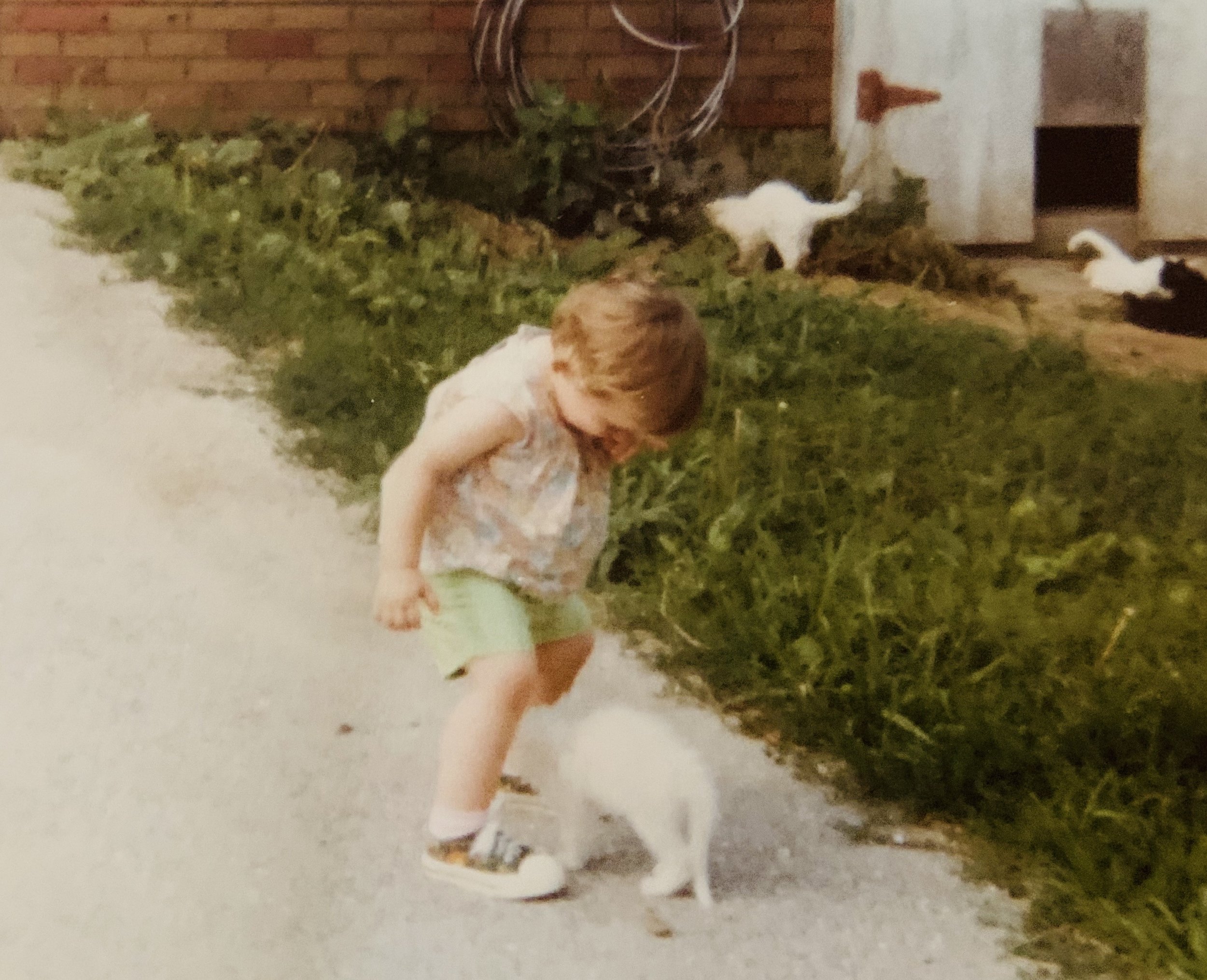microsanctuary life
Sanctuaries are the backbone of our movement for justice. They are a crucial part of providing refuge, education, connection.
As soon as I could walk, my love for cats was profound. I carried a sample of cat food in my backpack for the day when I’d care for a cat of my “own.” On my grandparents’ farm in Iowa during sunny summers, that love blossomed.
On the farm, I also had the opportunity to hold an egg in my hand while the tiny chick pecked away the shell. She wanted to see the world and worked so hard to move towards the light. My awe for that tiny being felt no different than what I felt for any of the cats I loved.
I’ve done my best to offer a home to as many felines and canines as possible over the years, beginning with my beloved first cat, Annie.
However, something was missing—or rather someone. Those many interact with only on plates.
Our microsanctuary became a response to helplessness and hope in equal measure.
Starting each day caring for individuals brought into the world to become food has tipped the scales for me, on most days, towards hope.
Opal, Rosie and Beatrice
Several years ago, I learned about a large rescue happening in Colorado led by Luvin Arms Sanctuary. Thousands of chicks (still cheeping) had been left for dead when a farm, marketed as producing free-range, all natural meat, went bankrupt. Three of those brave individuals came to live with me, a chicken care novice! I was nervous and excited. We learned together.
Hattie & Jane
One year later, two survivors of the brutal Kaporos ritual joined our flock. Hattie and Jane arrived in Indiana on a cold fall night thanks to activists who had been on site in NYC and those who drove birds across the country to their new homes. The babies were traumatized, yet still willing to trust. We learned together.
Edith Lillian
Last month, Edith Lillian entered our lives. She had been left without food or shelter, with 20 other hens, in a small pen, in the mud and heat. Thanks to the work of PEAK Animal Sanctuary we were connected. Edith Lillian had quite a bit of healing to do, and it continues. She is curious, tenacious and one of the sweetest girls I know. We are learning together.
Thinking about the possibility of starting a microsanctuary of your own?? If I can do it, you can do it!
A Few Tips -
1. Take care of yourself.
2. Research and plan ahead - You will learn as you go. Breathe.
3. Collaborate with microsanctuary folks and humans at bigger sanctuaries. Both have a place. It’s my experience that, for the good of all, we need sanctuaries of all sizes to fit together like puzzle pieces. There simply aren’t enough homes for all who need safety. And, if we truly accomplish what we seek to as a movement, more safe places will be needed.
4. Ask for help. We all need it sometimes. Brave people ask for help.
5. Protect yourself like you do the individuals who live at your microsanctuary. Living as a proud and positive vegan is profound.
6. Know your limits and practice saying “no.” It helps me to remember that saying “yes” also means saying “no” to someone or something else.
7. Stay open. There is so much good in the world.
8. Feel your feelings. Direct animal care is some of the most challenging work I’ve done. It is also some of the most meaningful. My animals—chickens and cats—have rescued me over and over again, simply by being themselves.
9. Laugh. The state of things is decidedly unfunny. However, laughter is the best medicine.
10. Take care of yourself.
We live in a complicated world. Systemic oppression, desperation, and fear abound. We are inundated with ideas that are not our own, insidiously and strategically.
Animal care is activism.
I learned early that chickens are individuals with inherent worth. Sharing that knowledge is important. Seeing the bonds form between the girls is beautiful; they have helped to heal my heart just as I’ve done my best to help heal them.
Seemingly small acts matter.






